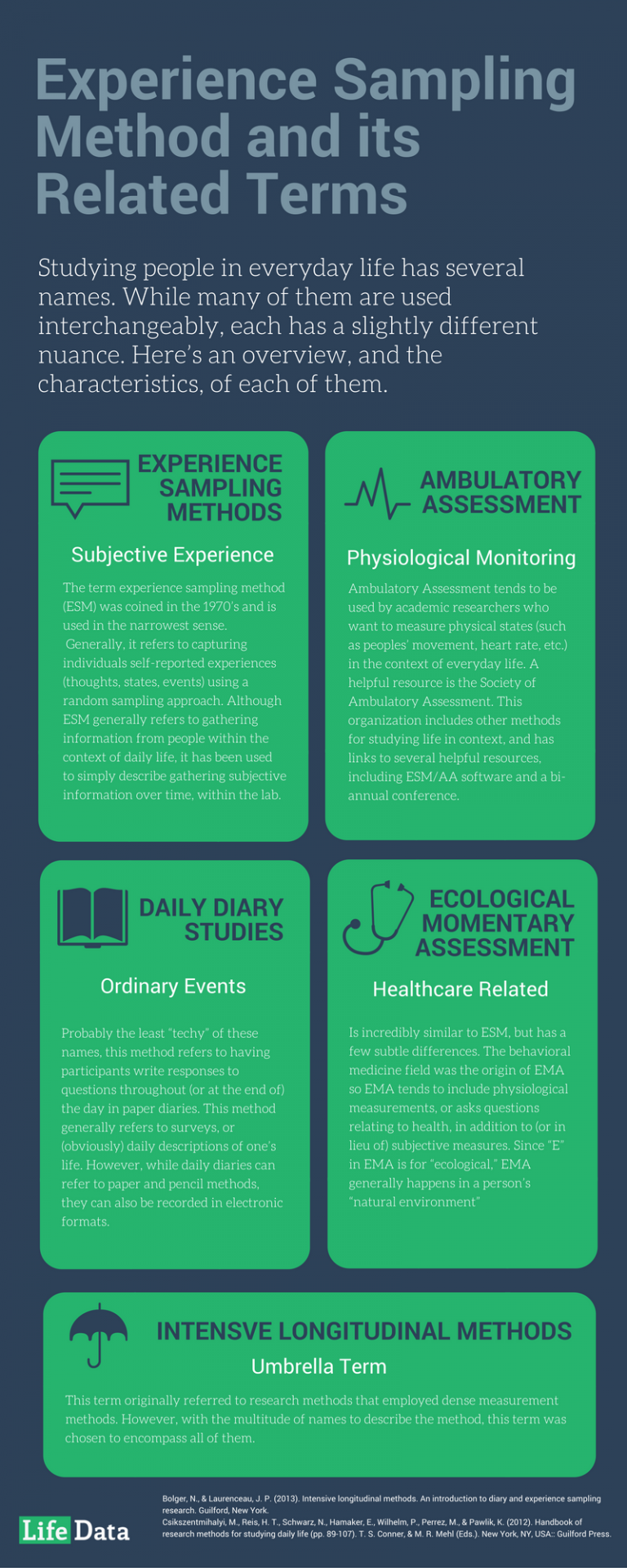Studying people in everyday life has several names. While many of them are generally used interchangeably, each has a slightly different nuance. Here’s a list, and the characteristics, of each of them.
Experience Sampling Methods (ESM)
This name is the most common, oldest (coined in the 1970’s), and used in the narrowest sense. Generally, this name refers to when people report on their subjective experiences (thoughts, states, events).
Although ESM generally refers to gathering information from people within the context of daily life, it has been used to simply describe gathering subjective information over time, within the lab. Such as studies that ask participants questions periodically as they complete a computer-based task (see Zedelius, et al., 2015; Franklin et al., 2014)
Ambulatory Assessment
Ambulatory Assessment tends to be used by academic researchers who want to measure physical states (such as peoples’ movement, heart rate, etc.) in the context of everyday life.
A helpful resource is the Society of Ambulatory Assessment. This organization encompasses all fields of in-the-moment research, and has links to several helpful resources, including ESM/AA software and a bi-annual conference.
Daily Diary Studies
Probably the least “techy” of these names, this method refers to having participants write responses to questions throughout (or at the end of) the day in paper diaries. This method generally refers to surveys, or (obviously) daily descriptions of one’s life. However, while it can refer to paper and pencil methods, daily diaries can be used in the modern sense, such as using electronic devices to record information.
Ecological Momentary Assessment (EMA)
Is incredibly similar to ESM, but has a few subtle differences. The behavioral medicine field was the origin of EMA so EMA tends to include physiological measurements, or asks questions relating to health, in addition to (or in lieu of) subjective measures.
Additionally, EMA happens in everyday life. As mentioned before, experience sampling can (but not usually) be used to describe sampling peoples’ experiences over time in a lab. Since “E” in EMA is for “ecological,” it generally happens in a person’s “natural environment.”
A Method by Any Other Name
There are four different ways/names of studying people over time in daily life. Although they are pretty much used interchangeably, but each has a general, identifying characteristic. Experience sampling refers to monitoring subjective experience, ambulatory assessment to physical monitoring, daily diary to descriptions, and ecological momentary assessment to (generally) health related variables. However, all four of these names refer to measuring people repeatedly over time, in real life, and is a method that can help us understand more about ourselves.
To learn about how LifeData can help power experience sampling/ambulatory assessment/daily diary/ecological momentary assessment studies, click here.
